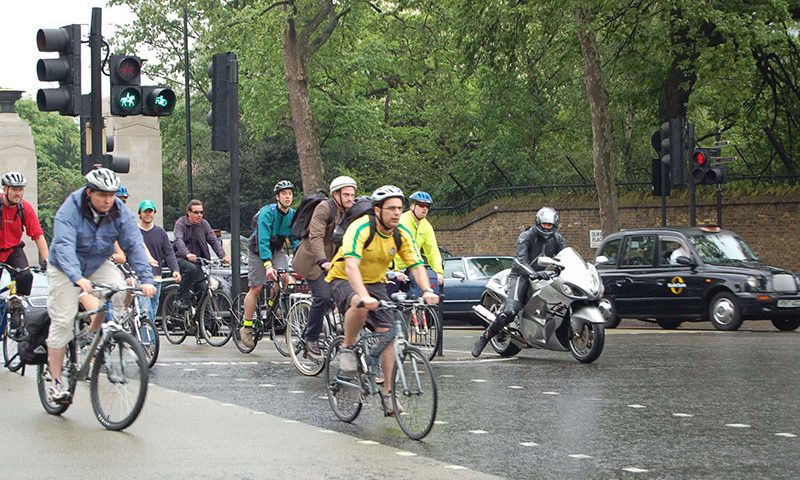Keeping pedestrians and cyclists safe on the roads

With climate change in the news and commuters urged to travel on bicycles and scooters, the number of people using these vehicles is likely to increase.
Councils are already thinking about introducing new cycle lanes to encourage more people to use these social distancing-friendly forms of transport. Meanwhile, motorists should also be prepared to start sharing the road with an increasing number of scooters and bicycles.
Here are some of the things you can do to help everyone stay safe on the roads.
Give a wide berth
Cyclists must never feel forced into the gutter by passing vehicles as this could cause them to lose control of their steering or put them at risk of colliding with pedestrians who step out into the road.
Drivers should refrain from passing cyclists or groups of cyclists on an uphill or downhill slope and should never speed up to overtake. The only time vehicles can safely overtake a cyclist, scooter or pedestrian is when the road ahead is straight and clear of oncoming traffic.
Look out at junctions
Be wary of cyclists and scooters when making any sort of turn in the road.
Cyclists and scooters take up a lot less space on the road and can be difficult to spot. When waiting at junctions, you should always assume that a scooter or cyclist could be concealed behind an oncoming vehicle and be ready to give way when necessary.
Watch for signals
Cyclists use hand signals to indicate their intentions on the road. Looking out for these signals can be really helpful when it comes to making sure you give cyclists enough space.
However, cyclists may not always be able to give signals if they need their hands to break or steer, so it’s important to be particularly attentive when approaching junctions or turns in the road.
Stay alert to any nearby pedestrians who may wish to cross or who might be forced to step into the road by roadworks or other obstructions on the pavement.
Resist using your horn
Your horn sounds louder from outside your car than it does inside, and used unexpectedly could startle cyclists, scooters and pedestrians, causing them to swerve or lose concentration on the road.
According to Rule 112 of the Highway Code, drivers are only permitted to use the horn while their vehicle is moving and they need to warn other road users of their presence. The law also states that drivers should never sound their horn in aggression or between the hours of 11.30pm and 7.00am.
Give cyclists a head start at traffic lights
Dedicated cycle spaces at traffic lights are designed to help cyclists get a head start. Some traffic lights are even staggered to allow cyclists to get away before motor vehicles.
Vehicles should refrain from obstructing these spaces when stopping at lights, as they’re designed to allow cyclists to wait ahead of other traffic. This is to help them move safely back into single file on the left-hand side of the road once the lights go green.
Take care when parking
Cyclists and scooters can be harder to see and hear than other road users, so it’s important to use your mirrors and check your blind spots when attempting to park. You should also use your indicators to communicate your intentions on the road.
Once parked, be sure to check your mirrors and blind spots again before opening the roadside door. It can be all too easy to take out a passing cyclist by opening your door unexpectedly.
Use your lights and indicators
Indicating at the last second before a turn can be dangerous for you and other road users. If you’re planning to turn or change lanes, it’s important to give other road users enough warning to adjust their speed or react according to your changing position in the road.
If driving at night or in adverse weather such as fog or rain, use your headlights to make other road users aware of your presence on the road.
Avoid distractions
It goes without saying that drivers should avoid distractions behind the wheel. UK law states it’s illegal to use handheld devices while driving, with fines of up to £200 and 6 penalty points for offenders.
However, it’s not just mobile devices that can lead to distracted driving. Noisy children and adjusting the radio station are among other common distractions for UK road users.
These are the top 10 driving distractions seizing your attention from the road.


